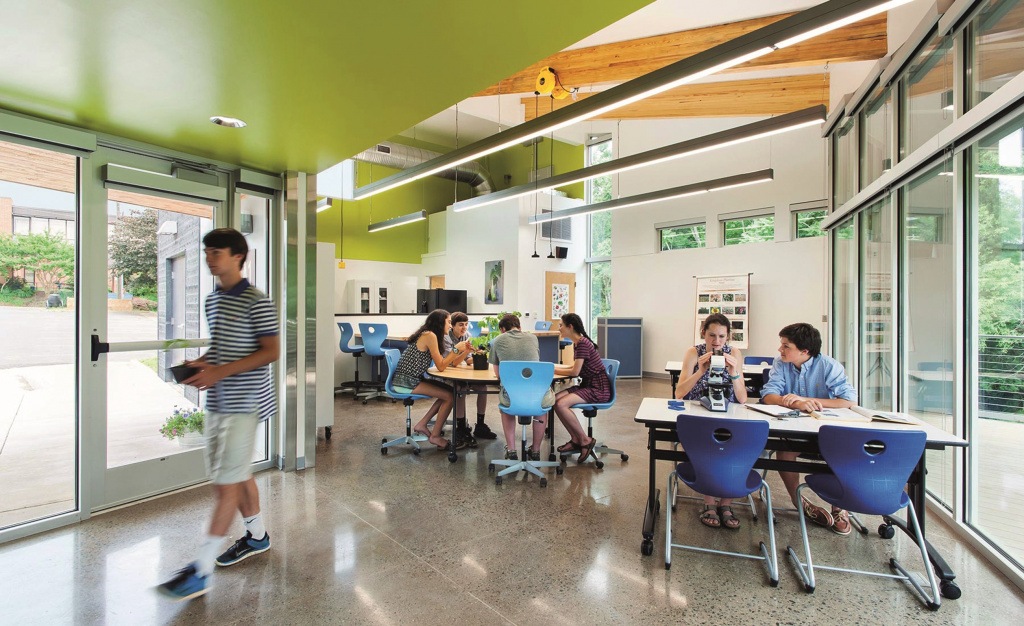
Do changes in learning spaces drive changes in pedagogy or do changes in pedagogy drive changes in learning space design? That is one question often asked by visitors to the Albemarle County Public Schools. And the answer is complex. The ecology of an educational ecosystem is full of inputs and interactions, and adaptation is a reaction to a whole experience.
From the first day in 2010 when we walked schools together we noticed that the dominant teaching wall in classroom after classroom forced an orientation of learners in spaces that seemed to drive rigidity and compliance in both teachers and children. Even when teachers pulled desks together or used tables to organise collaboration, the sameness of the furniture, coupled with “the teaching wall”, homogenised the learning environment. Students were most often found working on the same work in the same way, regardless of whether they were working together or listening to the teacher at the board.
As Ira walked classes and observed learners’ feet under desks, tapping, kicking, keeping rhyme or angling to tip back chairs, I watched children above their desktops struggling to pay attention, mostly doing school the way we intended, traditions framed by almost 100 years of young people sitting in rows. They were recipients of tasks to complete while listening to the adult at the front of the room. Ira was not surprised. I had hoped to see more active learning and knew our focus on lifelong learning competencies wouldn’t advance without shifts in teaching practice. We found the physical environments in most classrooms to be barriers to active learners and learning. We agreed that we had to do better.
We began the learning space change process by encouraging educators - principals. librarians and teachers alike – to simultaneously imagine contemporary pedagogical shifts and learning space redesign as an integrated shift. What happens if you make it easy for kids to climb to and sit on windowsills? What happens if kids can choose standing or lying on the floor? Ira described to teachers an airport scene he had witnessed catching an early morning flight from Michigan to Virginia – three men dressed in suits lying on their stomachs on the floor, working on their laptops – how, he asked teachers, will our kids learn to construct their own work environments in this century?
Ira began to think with teachers and librarians about the hard work inherent in supporting children to develop cognitive and social competencies together. This evolved into our rationale for offering children choices in how they oriented in space, creating physical comfort as they worked individually or with each other to “search, connect, communicate, and make” in learning spaces of all kinds.
A student liberated to learn has to make themselves both comfortable and effective. A student liberated to learn must be intrinsically motivated and know how to convert curiosity into a learning path. A student liberated to learn has to have the collaboration, communication, and empathy skills to search for expertise. And a student liberated to learn must have the technical skills of their time, in order to work in their world.